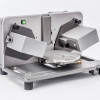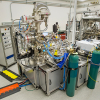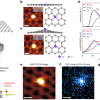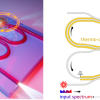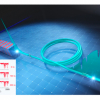The robust, all solid-state laser can be rapidly tuned to emit in the wavelength range that encompasses the critical “fingerprint” region where most molecular features are absorbed and identified through infrared sensing. In experiments, the laser has demonstrated its ability to capture the unique spectral fingerprint of gases.
“The only moving part in the entire system is the fan used to keep the laser cool”, said Manijeh Razeghi, Walter P. Murphy Professor of Electrical Engineering and Computer Science at Northwestern University, USA. “This is a major advantage over existing systems that require mechanical parts to achieve tuning, and we expect to demonstrate remarkable stability.”
The initial, patent-pending results have been published in Scientific Reports. The research and development of the laser system is the culmination of more than 18 years of quantum cascade laser development work at Northwestern’s Center for Quantum Devices.
The laser has been integrated into a system that contains all of the laser driver electronics and tuning software necessary for integration into a spectroscopy system. It produces a stable, single-aperture spot less than 3 mm in diameter that is suitable for standoff detection and is capable of linear or random access scanning with stabilisation times of less than 1 ms per wavelength.










